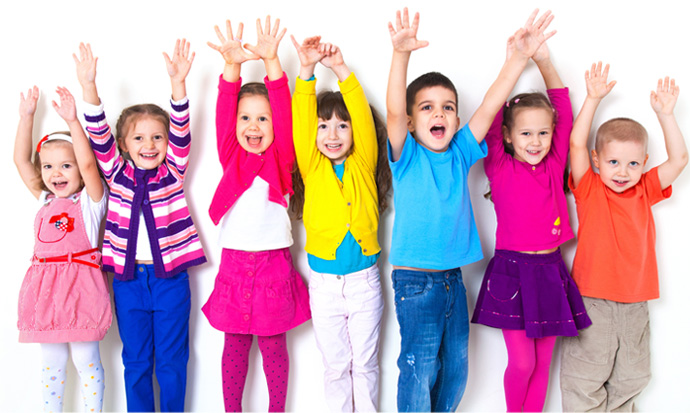Shine Speech and Hearing |
Audiological & Communicational
Rehabilitation Center |
|
 |
|
|
| |
Speech and language stimulation and therapy |
|
Shine works for the betterment of living. It helps to establish a proper connection of the individual with its surroundings by developing its communicative abilities. We work with children / adults having -
|
| |
 |
| |
1 Autism Spectrum Disorder
Autism spectrum disorder (ASD) is a neurological and developmental disorder that begins early in childhood and lasts throughout a person's life. It affects how a person acts and interacts with others, communicates, and learns. It includes what used to be known as Asperger syndrome and pervasive developmental disorders.
It is called a "spectrum" disorder because people with ASD can have a range of symptoms. People with ASD might have problems talking with you, or they might not look you in the eye when you talk to them. They may also have restricted interests and repetitive behaviors. They may spend a lot of time putting things in order, or they may say the same sentence again and again. They may often seem to be in their "own world."
At well-child checkups, the health care provider should check your child's development. If there are signs of ASD, your child will have a comprehensive evaluation. It may include a team of specialists, doing various tests and evaluations to make a diagnosis. |
| |
|
| |
2Attention Deficit Hyperactivity Disorder (ADHD)
Do you find it hard to pay attention? Do you feel the need to move constantly during times when you shouldn’t? Do you find yourself constantly interrupting others? If these issues are ongoing and you feel that they are negatively impacting your daily life, it could be a sign of attention-deficit/hyperactivity disorder (ADHD).
ADHD is a disorder that makes it difficult for a person to pay attention and control impulsive behaviors. He or she may also be restless and almost constantly active.
ADHD is not just a childhood disorder. Although the symptoms of ADHD begin in childhood, ADHD can continue through adolescence and adulthood. Even though hyperactivity tends to improve as a child becomes a teen, problems with inattention, disorganization, and poor impulse control often continue through the teen years and into adulthood. |
| |
|
| |
3Mental Retardation
Generally speaking, the symptoms of mental retardation include delays in oral language development, deficits in memory skills, difficulty learning social roles, difficulty with problems solving skills, decreased learning ability or an inability to meet education demands at school, failure to achieve the markers of intellectual development and a lack of social inhibition.
However, symptoms of mental retardation will vary depending on the condition’s severity. For instance, while signs of mild retardation (i.e., those with IQs of about 52 to 79) may include a lack of curiosity and quiet behavior, signs of severe mental retardation (i.e., those with IQs of about 20 to 35) may include infant-like behavior throughout the patient’s life, and those with profound mental retardation (i.e., IQs of 19 or below) are likely to have limited motor and communication skills and require lifelong nursing care. |
| |
|
| |
4Global Developmental Delay (GDD)
Global Developmental Delay (GDD) is the general term used to describe a condition that occurs during the developmental period of a child between birth and 18 years. It is usually defined by the child being diagnosed with having a lower intellectual functioning than what is perceived as ‘normal’. It is usually accompanied by having significant limitations in communication. It is said to affect about 1-3% of the population. |
| |
|
| |
5Learning Disability
A learning disability is a neurological disorder. In simple terms, a learning disability results from a difference in the way a person's brain is "wired." Children with learning disabilities are as smart or smarter than their peers. But they may have difficulty reading, writing, spelling, reasoning, recalling and/or organizing information if left to figure things out by themselves or if taught in conventional ways.
A learning disability can't be cured or fixed; it is a lifelong issue. With the right support and intervention, however, children with learning disabilities can succeed in school and go on to successful, often distinguished careers later in life. |
| |
|
| |
6Slow Learners
A slow learner is a child of below average intelligence, whose thinking skills have developed significantly more slowly than the norm for his/her age. This child will go through the same basic developmental stages as other children, but will do so at a significantly slower rate. However, this development, while being slower, nevertheless be relatively even. |
| |
|
| |
7Cleft Lip and palate
Dental Care for Children With Cleft Lips and/or Palates
Cleft lip and cleft palate are facial and oral malformations that occur very early in pregnancy, while the baby is developing inside the mother. Clefting results when there is not enough tissue in the mouth or lip area, and the tissue that is available does not join together properly.
A cleft lip is a physical split or separation of the two sides of the upper lip and appears as a narrow opening or gap in the skin of the upper lip. This separation often extends beyond the base of the nose and includes the bones of the upper jaw and/or upper gum. |
| |
|
| |
8Stuttering/ Stammering
Stuttering, also known as stammering, is a speech disorder in which the flow of speech is disrupted by involuntary repetitions and prolongations of sounds, syllables, words or phrases as well as involuntary silent pauses or blocks in which the person who stutters is unable to produce sounds. The term stuttering is most commonly associated with involuntary sound repetition, but it also encompasses the abnormal hesitation or pausing before speech, referred to by people who stutter as blocks, and the prolongation of certain sounds, usually vowels or semivowels. According to Watkins et al., stuttering is a disorder of "selection, initiation, and execution of motor sequences necessary for fluent speech production." For many people who stutter, repetition is the primary problem. The term "stuttering" covers a wide range of severity, encompassing barely perceptible impediments that are largely cosmetic to severe symptoms that effectively prevent oral communication. |
| |
|
| |
| |
9Articulation Disorder
Articulation disorders refer to errors in speech sounds by mispronouncing, substituting, or leaving out the sound. It is age-appropriate for children at certain ages to be producing errors with particular sounds. However, if a child is producing an error with a sound that they should have acquired, they may have an articulation disorder. Articulation disorders may impact a child’s speech intelligibility when communicating with others. |
| |
|
| |

10Voice therapy
Voice therapy is one type of a group of treatments known as speech and language therapy, which is directed at treating a broad spectrum of communication disorders. Most types of speech and language therapy (including voice therapy) are provided by speech-language pathologists.
The general goal of voice therapy is to rehabilitate the patient’s voice to a level of function that enables the patient to fulfill his or her daily voice and/or speech communication needs. |
| |
11Voice Modulation therapy
 volume and tone of voice are both subtle but critical aspects of social interaction. volume and tone of voice are both subtle but critical aspects of social interaction.
We all know a child who talks too loudly during interactions, their voice overpowering the conversation and negatively affecting their peer interactions.
There are the children who don’t speak loud enough for their opinions and thoughts to be heard by others, affecting their ability to maintain these peer interactions.
Then there are the children who speak too harshly or aggressively, when the situation calls for maybe a more straightforward tone.
There is even the child whose voice doesn’t match their facial expression, which leaves others confused by their intentions.
These children are all struggling with voice modulation, or their ability to adjust their voice volume, tone or inflection according to the situation at hand. |
| |
| |
12Relaxation
A relaxation technique (also known as relaxation training) is any method, process, procedure, or activity that helps a person to relax; to attain a state of increased calmness; or otherwise reduce levels of pain, anxiety, stress or anger. |
| |
|
| |
|
|
|